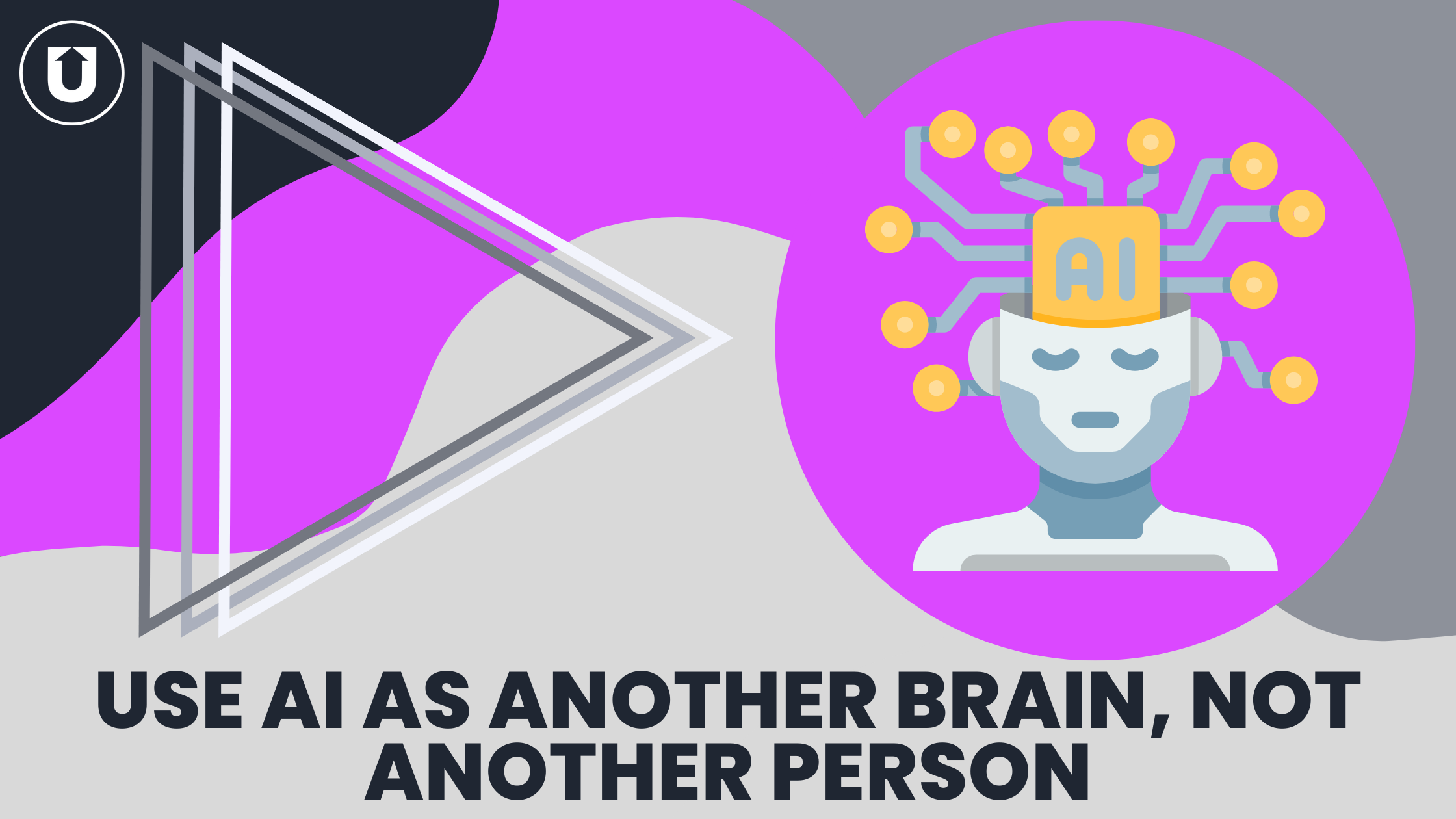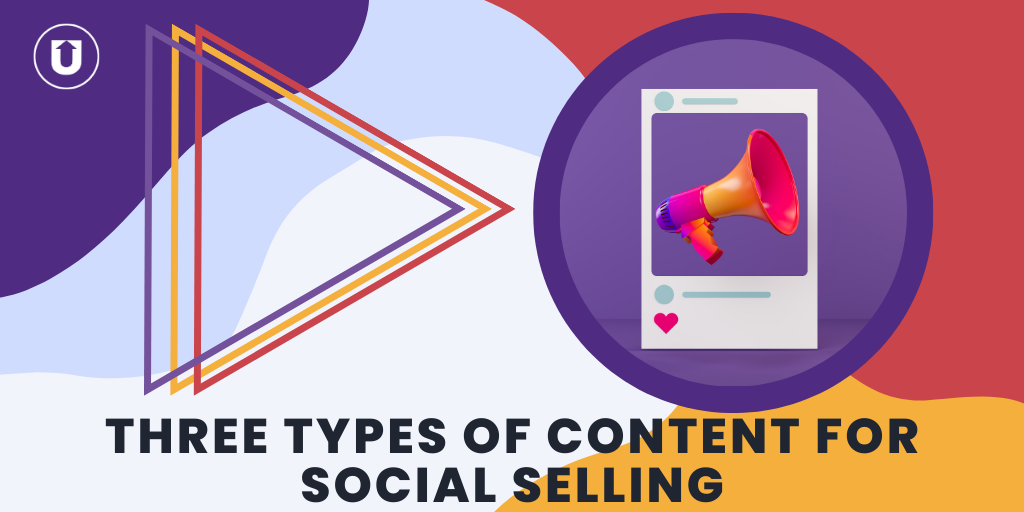You Should Use AI As Another Brain, Not Another Person

If you haven’t heard of ChatGPT, you’re probably living under a rock.
Or not on LinkedIn very often.
ChatGPT is an AI chatbot auto-generative system created by OpenAI that interacts with users in a conversational way, creating emails, outlines, blogs, and answering silly questions….really there are few limits to it.
But ChatGPT isn’t the first of its kind. It’s just made a pretty big splash since November 2022.
But it isn’t the only AI tool out there.
Artificial intelligence (AI) has come a long way in recent years and is used in various industries to automate repetitive tasks, improve efficiency, and make better predictions.
Using it for content creation is no exception, and many bloggers, writers, and marketers (including this author!) are now turning to AI to help them write high-quality blogs.
Let’s get this out of the way. DO NOT LET AI WRITE YOUR CONTENT AND DIRECTLY PUBLISH IT.
There are a million reasons why, but to name a few: grammar, tone, personality, and sourcing are a few reasons.
In this article, we will explore the potential benefits of using AI to assist with writing blogs, the limitations of this technology, and why we think it’s a useful “second brain” for content marketers.
Understanding AI and Natural Language Processing (NLP)
AI is a branch of computer science that deals with creating machines that can perform tasks that typically require human intelligence.
This includes understanding natural language, recognizing images, and making predictions.
NLP is a subfield of AI that focuses specifically on the interaction between computers and human language. This can include text generation, sentiment analysis, and language translation.
Different types of AI and NLP algorithms can assist with writing blogs.
For example, large text datasets can be used to train machine learning algorithms to identify patterns and generate new text.
This is known as text generation or language generation.
Other algorithms, such as sentiment analysis, can be used to understand the tone and emotion of a piece of text.
This can be useful for identifying a blog post's overall sentiment or detecting any negative or positive sentiment in customer reviews.
Advantages of Using AI for Blog Writing
While the advantages of any technology can vary, here are two of the biggest advantages we have seen while using AI to help with our own content creation.
1. Efficiency and Productivity
One of the biggest advantages of using AI to assist with blog writing is increased efficiency and productivity.
Many bloggers and writers spend significant time researching and writing, which can be tedious and time-consuming.
If you’ve ever stared at a blank Google doc with a blinking cursor, you know what I’m talking about.
It takes a lot of brain calories to write something from scratch, and even if writing is your passion, it can be exhausting to create all the time.
By using AI to automate specific tasks, such as research and data analysis, blog outlining, and generating concept ideas, writers can free up more time and energy to focus on the creative aspects of writing.
2. Improved Grammar
Another advantage of using AI for blog writing is improved grammar and language usage.
Many AI algorithms are trained on large sets of text, allowing them to identify common grammar mistakes and suggest improvement.
BUT this doesn’t mean it’s foolproof. Based on what styling you or your company use, you need to make sure the words AI pulls actually make sense in the context of what you’re writing.
For example, when we use AI, it will often mix the words “created” and “curated,” so we check for that. NOTE: They are not the same.
Limitations of Using AI for Blog Writing
Even with great benefits like time savings, brain energy savings, and help with grammar when using AI, some drawbacks have to be considered.
1. Lack of Creativity and Tone
The biggest limitation, in our opinion, is the lack of creativity and human touch an AI-generated blog can have.
While AI algorithms can be trained on large datasets of text and generate new text, they lack the creativity and spontaneity of human writers.
This can make the text generated by AI seem robotic and uninspired, which is funny because, well, it IS a robot.
Even though tools like Jasper AI give you the option to add tone, and you can even ask ChatGPT to write in a certain tone, it’s not the same as the person behind the keyboard with their unique tone.
2. Limited Knowledge
Another limitation of using AI for blog writing is the limited understanding of context.
AI algorithms are trained on large datasets of text, but they may not understand the nuances of language.
This can make it difficult for AI to identify the sentiment of a piece of text accurately or to understand the overall meaning of a sentence.
Again, they are only robots, but the robots learn. So if they are learning on misinformation or outdated information, there is always a chance that’s going to end up in your queries.
If you’re in a small niche or relatively new field, then AI-generated content may not work for you.
AI algorithms require large data sets to be trained on, meaning that it is still not possible to use AI in small-scale businesses or industries where the data is limited.
Further, remembering that these algorithms are trained on what was available at the time of their training is critical.
The “bot” can only respond with what existed at the time of its training, and therefore asking AI to write a compelling piece on a new finding, or unique perspective is not possible.
3. Ethical Considerations
Is using AI for content creation the cheater’s way out?
Ethical concerns surrounding the use of AI for content creation have been a major topic of discussion over the last few months.
There are concerns that AI algorithms may perpetuate biases or stereotypes and that AI-generated content may use them to spread misinformation or propaganda.
How can you protect against that? Again, using AI to help, not do the job for you, can help ensure that the content you’re sharing does perpetuate harmful stereotypes or misinformation.
Five Ways We Use AI for Content Creation
So, what are some of the ways you can use AI safely, ethically, and efficiently?
We like to use the term “second brain” because having a robot to talk to is like having another person bounce ideas off of without overwhelming another team member’s brain power.
We’ve been using AI recently to help with our content creation (just because we are a content curation software doesn’t mean we don’t believe in the power of creation!), and here are some helpful tips we have been using ourselves.
1. Outlining
We use tools such as ChatGPT to help with the basis of an outline.
This gives us an idea of what people are searching for and want to read regarding a specific topic and honestly helps get some content on the page.
We usually end up adding, changing or taking away suggestions from that initial outline, but it’s nice to have a robot do the initial typing!
2. Writing Small Chunks of Copy
If we like where that outline is going, we will ask Chat GPT to write a basic blog based on the outline or ask the robots to expand on it to give us more context on what it found.
This copy doesn’t end up going through the final drafts untouched though. Usually, it’s rewritten to include our wonderfully sarcastic and informative tone.
But it’s a huge help to our staff (of one, just me, I’m our content creator here) to get words on the page, even if they are all deleted and something else entirely is written in its place.
For this writer, it’s helpful to have content there than a blank screen.
But you do what floats your boat.
3. Writing Meta Descriptions
Sometimes, we have AI help us with meta descriptions. I hate writing them but usually ask AI to give me a sample.
I end up rewriting most, if not all of it, but it helps me get past the brain hurdle when trying to summarize the article I just wrote to help Google find it better.
4. Getting Emails Started
Did you know you can ask AI to help with emails?
We have used it to help with promotional emails and even email responses!
Make sure you’re rewriting to make it sound like you, but this definitely cuts email writing time down significantly.
5. Social Media Captions
With tools like Lately and ChatGPT, we are able to generate sample social media captions based on blogs and articles we share (created AND curated!) on our social media pages.
Again, these are usually just launch points for us to fine-tune and tweak, but having a place to start is so nice.
We think editing is easier than creating from scratch, and with a lean team, we definitely care about efficiently using our brain power here!
Next Steps To Using AI For Your Content Creation Efforts: Using
AI to assist with content creation has many potential benefits, including increased efficiency and productivity and improved grammar and language usage.
However, there are also limitations to consider, such as the lack of creativity and human touch, the limited understanding of context and tone, and the ethical concerns surrounding the use of AI.
As the field of AI continues to evolve, it will be important to consider these limitations and use AI in a responsible and ethical manner.
If you’d like to learn more about how we use AI in our content curation software, check out our Smart Sort feature!
To learn more about why content curation and content creation go hand in hand, check out some of these other blogs!



